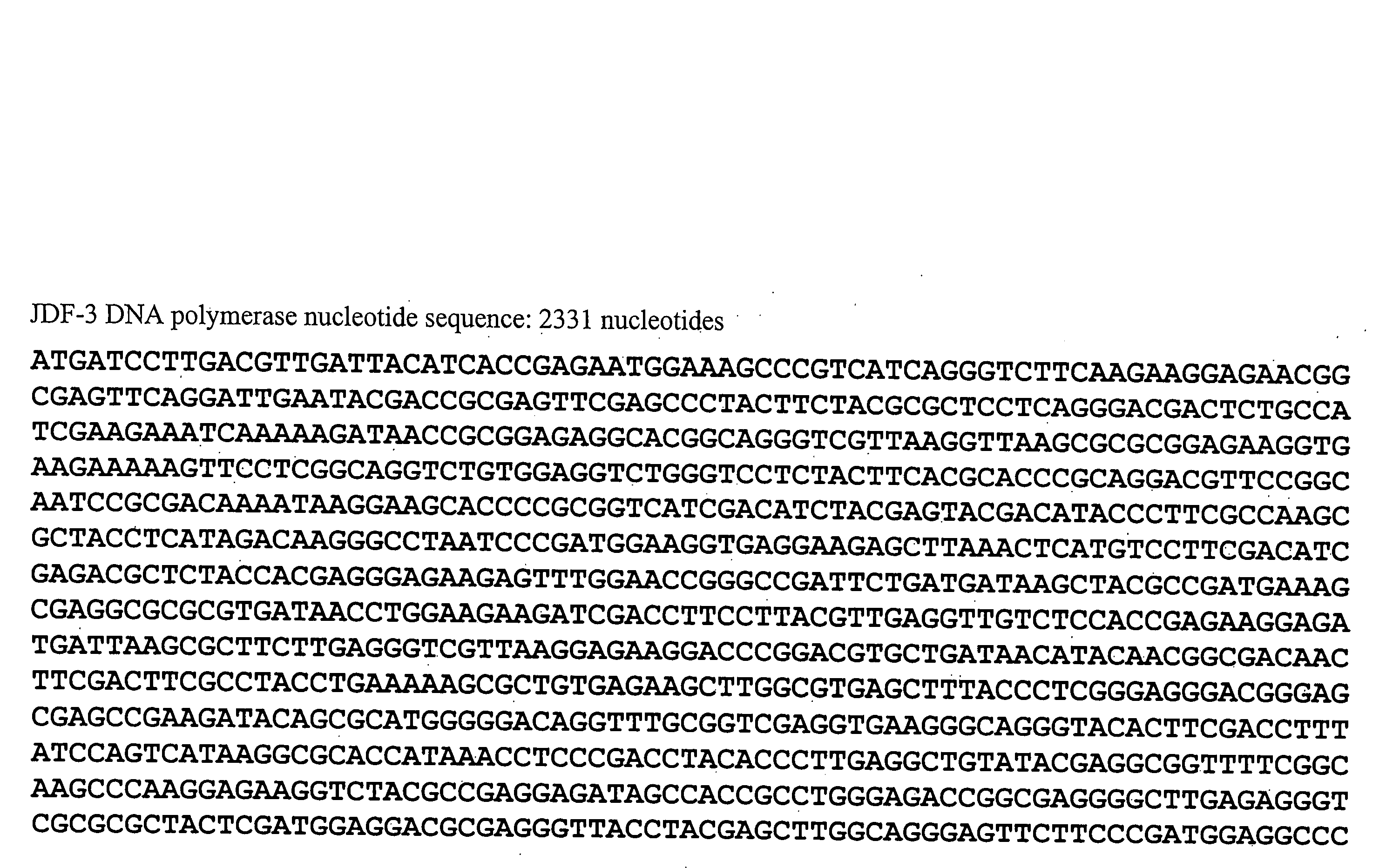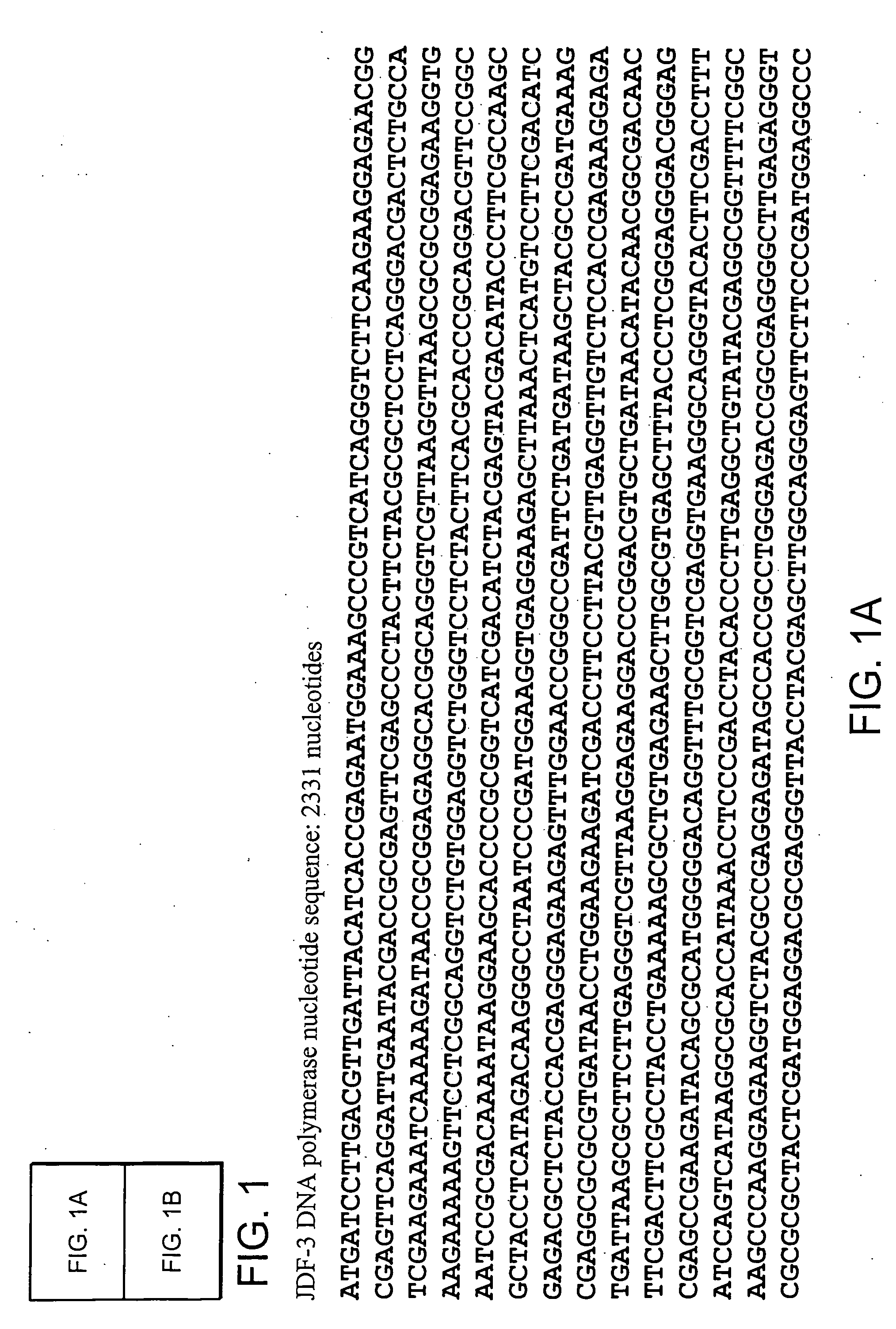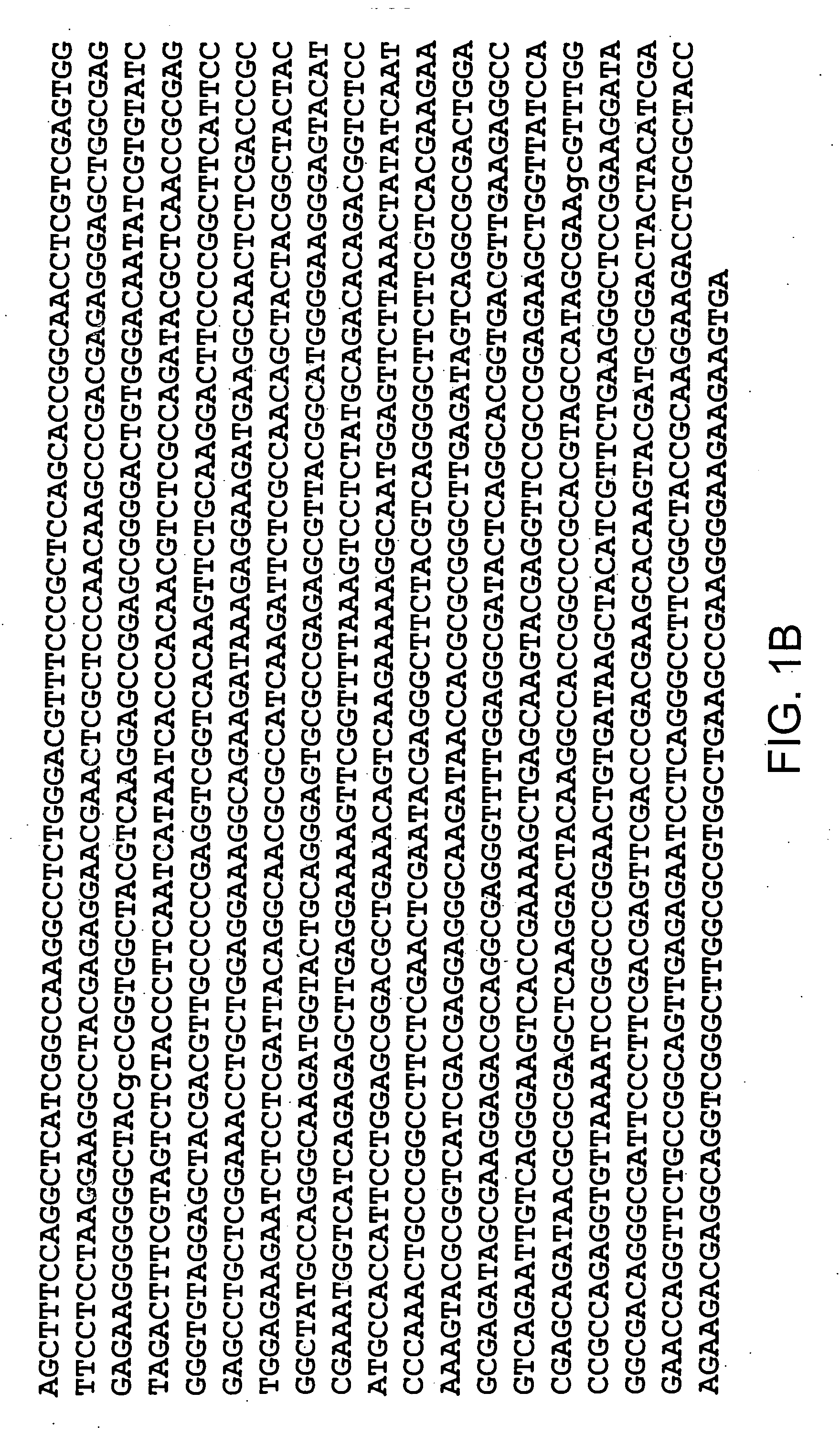Compositions and methods utilizing DNA polymerases
a technology of dna polymerase and enzymes, applied in the field of compositions and methods utilizing dna polymerase enzymes, can solve the problems of reducing the efficiency of incorporation of a particular nucleotide, adversely affecting the performance of techniques or assays, and chain termination
- Summary
- Abstract
- Description
- Claims
- Application Information
AI Technical Summary
Benefits of technology
Problems solved by technology
Method used
Image
Examples
example 1
A. Cloning a DNA Polymerase Gene from Thermococcus Species JDF-3 DNA Polymerase
[0172]A Thermococcus species was cultured from submarine samples taken from the Juan de Fuca ridge. Genomic DNA was isolated and used to prepare a genomic DNA library in ZAP II (Stratagene) using standard procedures. The lambda library was plated on XL1-Blue MRF′E. coli and screened for clones with DNA polymerase activity using a variation of the method described by Sagner et al. (Sagner, G., Ruger, R., and Kessler, C. (1991) Gene 97:119-123). Plaques containing active polymerase were cored and stored in SM buffer. Positive primary plaques were re-plated and re-assayed to allow purification of isolated clones. Secondary clones were excised according to the instructions provided with the ZAP II system (Stratagene), and the DNA sequence of the insert determined (FIG. 1).
[0173]The translated amino acid sequence of the JDF-3 DNA polymerase is shown in FIG. 2. Amino acid sequence alignments show that JDF-3 DNA...
example 2
Labeling of DNA
[0309]The modified DNA polymerases of the invention are applicable to labeling of DNA. It is known to those skilled in the art that there are several means by which to label DNA, including the incorporation of radiolabeled nucleotides. One such common means is by random priming, which enables one of skill in the art to generate labeled DNA fragments, typically about 50 to about 1000 bases long. The procedure described herein are adapted from F. Ausubel et al., Short Protocols in Molecular Biology, Third Edition, John Wiley and Sons, Inc., 1995.
[0310]As a first step toward random priming DNA, a reaction mix containing 2.5 microliters 0.5 mM 3dNTP (dCTP, dGTP, TTP, each at 0.5 mM), 50 Ci [-32P]dATP, 1 microliter of 3 to 8 units / microliter DNA polymerase in 50 mM Tris-HCl, pH 7.5, 10 mM MgCl2, 1 mM dithiothreitol, 0.05 mg / ml bovine serum albumin is prepared in a total volume of 11 microliters and incubated on ice. Next, about 30 to about 100 ng of DNA is mixed with about...
example 3
[0314]The modified DNA polymerases of the invention are also applicable to identify a nucleotide at a given position of a template DNA molecule, i.e., by mini-sequencing. For example, the JDF-3 DNA polymerase P410L / A485T mutant (JDF-3 D141A / E143A / P410L / A485T) generates the longest and most uniform radioactive DNA sequencing ladders using low ddNTP / dNTP ratios (1 / 100), indicating efficient ddNTP incorporation, minimal base selectivity, and high polymerase activity. This example describe the properties of this JDF-3 DNA polymerase P410L / A485T mutant and a procedure for optimizing the conditions for mini-sequencing using the mutant polymerase.
A. Experimental Protocol
[0315]i. Materials
[0316]StrataPrep PCR columns, StrataPrep DNA gel extraction columns, cold ddNTPs, calf alkaline phosphatase and pBluescript II were from Stratagene. Rhodamine labeled-ddNTPs were purchased from NEN. EDTA / blue dextran, rhodamine dye-matrix standards, and the SNaPshot ddNTP primer extension kit were purchase...
PUM
| Property | Measurement | Unit |
|---|---|---|
| temperatures | aaaaa | aaaaa |
| temperatures | aaaaa | aaaaa |
| temperatures | aaaaa | aaaaa |
Abstract
Description
Claims
Application Information
 Login to View More
Login to View More - R&D
- Intellectual Property
- Life Sciences
- Materials
- Tech Scout
- Unparalleled Data Quality
- Higher Quality Content
- 60% Fewer Hallucinations
Browse by: Latest US Patents, China's latest patents, Technical Efficacy Thesaurus, Application Domain, Technology Topic, Popular Technical Reports.
© 2025 PatSnap. All rights reserved.Legal|Privacy policy|Modern Slavery Act Transparency Statement|Sitemap|About US| Contact US: help@patsnap.com



